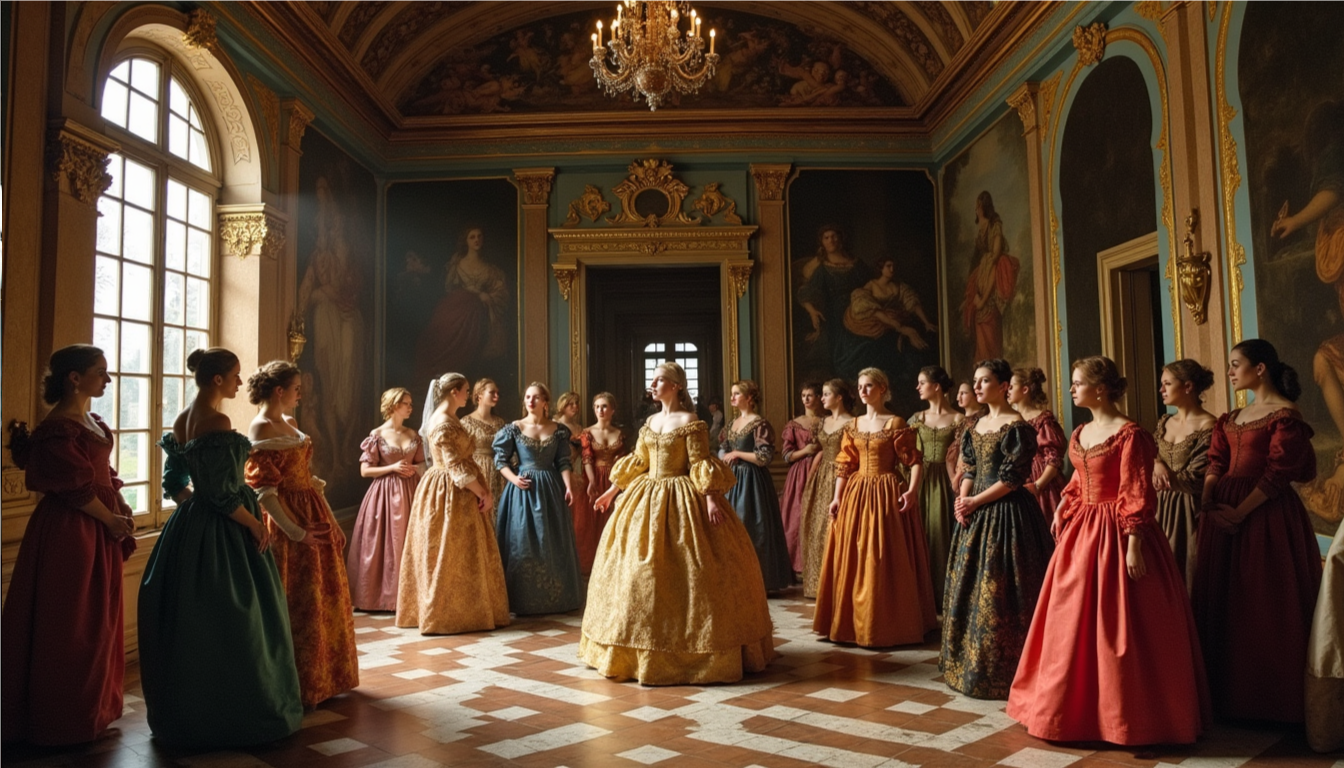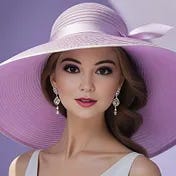Almost everyone is running scared about how AI will change our life.
But let us think deeply on that.
Let us look at the brighter side of things
AI is bringing wonders not even imagined.
If used wisely we will be writers , storytellers, time travellers ,
painters and creators all possible through AI!
There are 2 kinds of people in the AI world.
Those that are afraid of it and spend so much time writing the bad side of it,
And those that welcome the change and do something meaningful about it.
Picture yourself in the palace of Versailles era about 1700’s.
What was it like living in a castle?
Imagine for once you are walking in the gardens of Versailles!
This is the age of travelling through time and reliving that epoch.
Now think of the clothes that people wore in that age.
Creating ball gowns in the court of Louis XIV at the Palace of Versailles was an elaborate process that reflected the wealth, status, and strict etiquette of the time. Here's a breakdown of how they were made:
1. Materials:
Luxurious Fabrics: The gowns were primarily made from rich silk weaves like satin, taffeta, and velvet. These materials were costly and visually opulent, emphasizing the wearer's high social standing. Sometimes, other expensive fabrics like brocades with gold or silver threads were used.
Linings: Sturdy linen was often used for the lining of the bodice and sometimes the skirts, providing structure and support.
Trims: Lavish embellishments were crucial. These included:
Lace: Often intricate and expensive, used to trim necklines, sleeves, and skirts.
Embroidery: Detailed designs using silk or metallic threads.
Ribbons: Used for decoration and sometimes for fastening.
Furs: To further highlight the wearer's status, especially for court balls.
2. Construction:
Bodice (Corps de Robe):
The bodice was typically boned using whalebone or reeds to create a rigid, conical shape that was fashionable at the time.
It was often made in multiple layers, including a sturdy foundation layer (sometimes with buckram) covered by the fashionable outer fabric.
The bodice was fitted tightly to the upper body, often lacing up the back.
Necklines were generally low and often trimmed with lace.
Sleeves were full and sometimes boned to maintain their shape, often featuring lace or ribbon trims. Separate undersleeves of linen were also common.
Skirt (Petticoat):
Skirts were often draped and voluminous.
For formal occasions, skirts could have long trains, which were a significant marker of courtly dress. These trains could be pinned up or left to trail.
The hem of the skirt was often stiffened with ribbons or featured decorative elements like fringe.
To achieve the desired wide silhouette, panniers (wide hoops or frames worn under the skirt) became increasingly popular later in Louis XIV's reign and the subsequent periods.
Assembly: The boned bodice and the elaborate skirt were constructed separately and then worn together. Sometimes, there was also a decorative stomacher that filled the front opening of the bodice.
In summary, creating ball gowns in Louis XIV's Versailles involved:
Sourcing expensive and luxurious materials, primarily silks.
Constructing a rigid and shapely boned bodice.
Creating a voluminous and often trained skirt.
Extensive use of decorative trims like lace, embroidery, and ribbons to signify status and wealth.
These gowns were not just clothing; they were powerful visual statements of rank and adherence to the strict codes of the French court under the Sun King.
It would be incredible to wear the clothes of times past.
To experience how it was in some foreign distant land.
Imagine the embroidery , the hats , the jewelry
Without the expense of thousands of dollars to recreate it now.
Let us keep on creating and live stories to tell!













